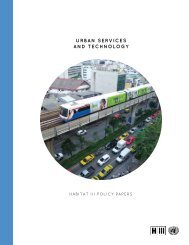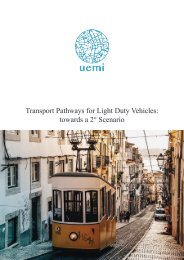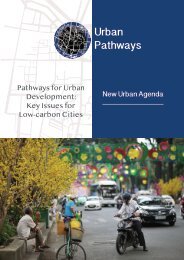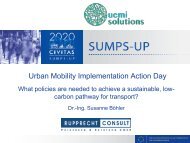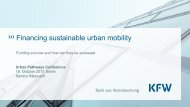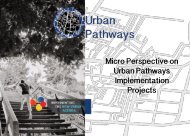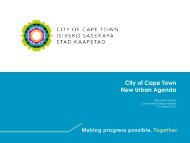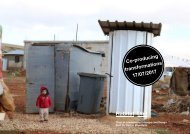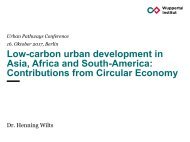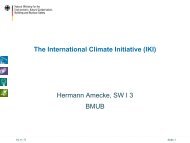Nao_Takeuchi_Waste
Create successful ePaper yourself
Turn your PDF publications into a flip-book with our unique Google optimized e-Paper software.
11.6.1<br />
scope<br />
12.5<br />
scope<br />
Experts’ Feedback<br />
Sub-Indicators (WASTEAWARE Indicators)<br />
WASTEAWARE Indicators (Wilson et al, 2015)<br />
Using wasteaware indicators as sub-indicators would help visualise gradual improvement of SWM<br />
1<br />
2<br />
3<br />
Physical<br />
component<br />
Public health<br />
- waste<br />
collection<br />
Environment<br />
al control -<br />
disposal<br />
Resource<br />
value - ‘3Rs’<br />
- Reduce,<br />
reuse,<br />
recycle<br />
Indicator name and<br />
definition<br />
<strong>Waste</strong> Collection<br />
Coverage:<br />
% households who have<br />
access to a reliable waste<br />
collection service<br />
Controlled treatment or<br />
disposal:<br />
% of the total municipal solid<br />
waste destined for treatment<br />
or disposal which goes to<br />
either a state-of-the-art,<br />
engineered or ‘controlled’<br />
treatment / disposal site<br />
Recycling rate: % of total<br />
municipal solid waste<br />
generated that is recycled.<br />
Includes materials recycling<br />
and organics valorisation<br />
(composting, animal feed,<br />
anaerobic digestion).<br />
Extract from guidance notes in User Manual<br />
<strong>Waste</strong> collection coverage represents the access that the population of a<br />
city have to a waste collection service, including both formal municipal<br />
and informal sector services. A ‘collection service’ may be ‘door to door’ or by<br />
deposit into a community container. ‘Collection’ includes collection for<br />
recycling as well as for treatment and disposal (so includes e.g. collection of<br />
recyclables by itinerant waste buyers). ‘Reliable’ means regular - frequency<br />
will depend on local conditions and on any pre-separation of the waste.<br />
The ‘numerator’ in this calculation is the total waste that is dealt with<br />
in a ‘controlled’ facility (e.g for land disposal, composting or waste to<br />
energy). The ‘denominator’ is the total solid waste destined for<br />
treatment or disposal - that is the total waste generated less waste<br />
recycled or reused.<br />
<strong>Waste</strong> being accepted at a facility ‘counts’ towards this quantitative indicator if<br />
the facility has reached at least an intermediate level of control. To use land<br />
disposal as an example, and referring to the stepwise improvement of sites,<br />
both uncontrolled and semi-controlled sites would fall below the threshold,<br />
while controlled, engineered and full sanitary landfills would all count towards<br />
this indicator.<br />
Includes materials recycling and organics valorisation (composting, animal<br />
feed, anaerobic digestion). Includes the contribution from the ‘informal’<br />
recycling sector as well as formal recycling as part of the solid waste<br />
management system. The total quantity collected for recycling should be<br />
adjusted downwards to allow for any materials that are subsequently rejected<br />
and sent for treatment or disposal.<br />
11




